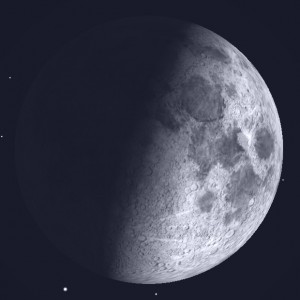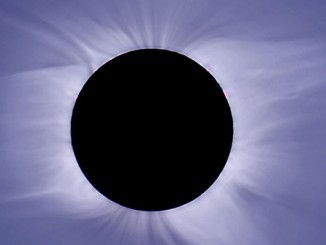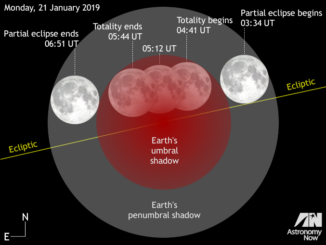
The Moon’s decidedly elliptical orbit means that its distance from the Earth varies considerably over the course of a month. Consequently, both its size and phase waxes and wanes over the course of a lunation. When at its closest to Earth (some 222,000 miles, an position termed perigee), the Moon has an apparent size that’s 13% larger than when it’s furthest away (apogee, 252,000 miles).
With perigee occurring 27th November, it’s perhaps not surprising that the First Quarter Moon two days later should be bigger than average, but it just so happens that this Saturday’s half Moon is the largest of 2014. In fact, you won’t see a larger First Quarter Moon until 12th May 2019! (See also perigee Full Moon, or Supermoon.)
(Of course, if one wishes to be really picky, the distances of perigee and apogee are geocentric, calculated between the centres of the Earth and Moon. The Moon at the zenith – something that we never see from the British Isles – would actually be nearly 4000 miles closer owing to our observing position on the Earth’s surface. Furthermore, we talk of the ‘Moon orbiting the Earth’, but they both orbit their common centre of mass, the barycentre – a point that lies about 1000 miles below the Earth’s surface.)
So, if the weather’s obliging and you catch a glimpse of the Moon when highest in the sky (and consequently closest to the British Isles) around 6 pm Saturday evening, reflect on the fact that our nearest celestial neighbour will be ‘only’ 228,300 miles (367,400 kilometres) away. To put that in perspective, if you set off in your car at 50 miles/hour and didn’t stop for fuel or comfort breaks, you’d cover that distance in just over six months!
If you’d like to find out more about lunar cycles and planetary peregrinations, or wish to plan your observing sessions both near and far, please investigate our website’s new and fully interactive Global Sky Almanac.



